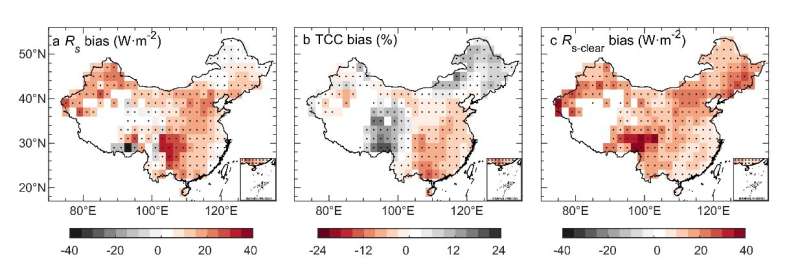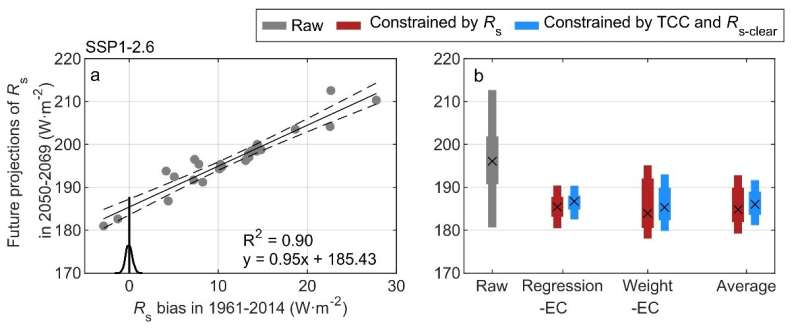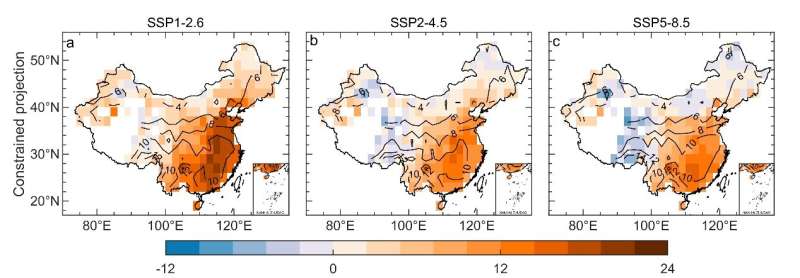Constrained future brightening of solar radiation in China and its implication for solar power

Surface solar radiation (Rs) data is essential information for the development of solar power usage to mitigate the ongoing climate change. To meet China's carbon neutrality goal, China has invested and planned heavily in solar photovoltaic systems.
However, future projections of Rs based on climate models contain large uncertainties due to internal climate variability, model uncertainty, and scenario uncertainty, which have not been eliminated by previous studies. Moreover, the model biases in Rs and the underlying drivers have yet to be quantified.
By integrating the high-quality observations and the latest Coupled Model Intercomparison Project Phase 6 (CMIP6) model data of Rs, a research team led by Prof. Kun Yang (Department of Earth System Science, Tsinghua University) has explored the model bias of CMIP6 models in Rs and quantified the physical causes of the model bias in China. The systematic bias in Rs in CMIP6 models is revealed to be caused by clouds and aerosols, resulting in largely uncertain projections for future changes in Rs.

To correct this effect, the team used historical biases of models to constrain the future projections of Rs under three possible future scenarios based on emergent constraints, an approach with a solid physical basis for narrowing the uncertainties of future climate projections through the combination of an ensemble of climate simulations with contemporary measurements.
The research is published in the journal National Science Review.
The constrained results substantially reduce the projection uncertainties by about 56% in the mid-21st century. Moreover, the team found that the constraints using the combined effect of the TCC and Rs-clear biases can account for about 81% of the projection uncertainties using R.
The constrained projections of Rs show a spatial pattern significantly favorable for the future solar energy layout. The researchers found that the mean Rs change during 2050-2069 relative to 1995-2014 is brightening. Particularly in North China and Southeast China with higher power demand, the constrained projections present more significant brightening.

With increased anthropogenic forcing, the constrained future changes show weaker brightening in eastern China and more dimming in western China. "Low anthropogenic emissions under the carbon neutrality actions would not only help to mitigate global warming but also increase solar energy potential, consequently creating positive feedback for building a climate-resilient society," Yang says.
Better estimates and uncertainties of future Rs changes improve the reliability of climate projections to facilitate effective investment of solar power in China. These results highlight the need to consider the change in spatial pattern of future Rs when making policies or decisions associated with future solar energy deployment.
More information: Yanyi He et al, Constrained future brightening of solar radiation and its implication for China's solar power, National Science Review (2022). DOI: 10.1093/nsr/nwac242
Provided by Science China Press





















